In the Chinese (Lunar) calendar, the 15th day of the 8th month is considered the middle of the autumn season. On this day, the Chinese celebrate the “Mid-Autumn Festival”, also known as the “Moon Festival” (as this is the time of year the moon is considered the brightest and roundest). This year, 2012, the Moon Festival falls on Sunday, September 30th.
According to my husband’s father, the reason why this holiday came to be… Chinese legends tell of a time when there were 10 suns – it was very hot. An archer shot down 9 of the 10 suns from the sky, and the weather became more bearable and appropriate for growing crops. The Archer was rewarded with an elixir of immortality. Instead of taking the elixir, the Archer hid it inside his house. Somehow, his beautiful wife (Chang’e) found it and drank it, and it made her float all the way up to the moon. So now, Chang’e (the Archer’s wife) lives on the moon. Once a year, her husband visits her on the moon – which is why the moon is so full and beautiful on this day.

Chang'e and the Jade Rabbit
In another version of this story that I read online, the Emperor of Heaven felt pity for the husband and wife that were now separated, and commanded the rabbit who lives on the moon (the Jade Rabbit) to make a new elixir for the wife to return her to the earth. The legend states that the rabbit is still pounding herbs on the moon to make the elixir – and you can see the outline of the rabbit on the moon when it is full.
(It’s interesting that the Chinese have a legend that refers to a rabbit on the moon… the Japanese also have a legend about how the rabbit came to the moon. Basically, a monkey, fox, and rabbit were huddle around a campfire. The Emperor of Heaven came down to Earth in disguise as a poor old starving beggar, and asked the animals if he could join their campfire to get warm. The monkey climbed a tree and brought the man some fruit, the fox brought the man a fish that he trapped in the river, but the rabbit had nothing to offer the old man. So the rabbit told the man to put him in the fire and when he is cooked, the old man can eat his body. The Emperor (disguised as the old man) was so touched by the rabbit’s offer of sacrifice that he took the rabbit up to the moon in a place of honor, where he still lives today – pounding rice to make mochi.)
Anyway, the Moon Festival means mooncakes! Mooncakes can be quite expensive – often about $5 each, and somewhere around $20 for a box of 4. You can find mooncakes in all kinds of flavors – red bean, lotus, mung bean, taro… and various other paste-like fillings, sometimes with salted egg yolks inside. My father in-law explained the significance of eating mooncakes: During the Yuan dynasty, Han Chinese revolutionaries coordinated to overthrow Mongol rule by smuggling secret messages hidden inside mooncakes during the Moon Festival, and now, everyone eats mooncakes to commemorate that event.
You can make your mooncakes with any fillings you like. This time, I used sweetened red bean paste, which you can buy premade at the Asian market in a can. You can also cook mung beans, red beans, or taro in boiling water until soft, then mash and puree with sugar to make a thick paste – and use that as a filling instead. I did not have a special mooncake mold, so I had to figure out how to make decent looking mooncakes by hand. When I was at JoAnn’s fabric store, I found these acrylic stamps with geometric floral designs for $1, and used those to create the design on the top. You don’t necessarily need to use a stamp to make a design… you can leave yours plain… but the design makes it look a little bit more special.
Most mooncake dough recipes call for the use of alkali water (a.k.a. “lye water”). Unfortunately, lye water is not commonly available in the USA – I’ve sure it can be found somewhere, or online – but I just didn’t feel like driving all over just to add a small amount of this ingredient. Instead, my recipe calls for the use of a different ingredient to add alkalinity to the dough – common baking soda. Golden syrup is another hard to find ingredient – however, since this is a British product, it can be found in most international markets, and I have also seen it at Cost Plus World Market. If you cannot find Golden Syrup, you can purchase it online, or substitute with corn syrup or agave nectar.
**Update 9/17/2012: If you decide to make mooncakes using a mold or press, use this recipe and technique instead.**
Mooncake dough:
- 1 c. all purpose flour
- 1/4 c. Golden Syrup
- 2 T. canola oil
- 1/2 tsp. baking soda
- 1/2 tsp. salt
Mooncake filling suggestions (aprox. 2 cups needed):
- 1 can (18 oz) Sweetened Red Bean Paste or
- mashed sweetened cooked taro or
- cooked sweetened mung bean puree
- 1 egg yolk + 1 T. water
- large Acrylic Stamps (any flower or geometric design) or
- Rice Mold (use only round symmetrical shapes like flowers) or
- Mooncake Mold
1. Sift the flour, salt, and baking soda in a bowl with a wire whisk.
2. Add the oil and golden syrup to the dry ingredients. (If you cannot find golden syrup, you can substitute with light corn (karo) syrup, agave nectar, or maple syrup. But use golden syrup if you can find it – often international markets, or British markets typically carry it.)
3. Mix the ingredients together, then knead to create a smooth dough – similar to the texture of play-doh.
4. Portion your filling into 8 smooth balls, each approximately a scant 1/4 c. of filling. (Whatever filling you choose to use, it should be stiff enough that you can form a ball – similar to the texture of cookie dough.) Portion your dough into 8 pieces.
5. Lay out a piece of plastic wrap on the counter. Flatten one portion of dough, sprinkle with a little bit of flour, then use a rolling pin to flatten into a 4 – 5 inch circle.
6. Lay one ball of filling in the center of the dough.
7. Use the plastic wrap to wrap the thin layer of dough around the ball of filling.
8. Roll the ball between your palms to smooth out and seal the seams.
9. Use a clean large stamp to push the top down, so that your mooncake is about 3/4 to 1 inch tall. Use your fingers to smooth the edges into a round shape, so that you end up with a round disc with a design stamped into the top. (I also tried using a flower shaped rice mold also – which turned out ok, but I preferred the look of the hand-shaped mooncake.) The stamped design will become less noticeable throughout the baking process, so make sure your design is stamped well – if it is too lightly stamped, it will not show up at all later.
10. Place the mooncakes on a silicone lined cookie sheet, then brush the tops of the mooncakes with a little bit of water (or mist them lightly with water). Then bake for 8 minutes in a 350 degree preheated oven.
11. Remove the mooncakes from the oven, and set aside to cool for 15 minutes. Meanwhile, reduce the temperature in the oven to 300 degrees.
12. Brush the mooncakes lightly with a small amount of eggwash. Return the mooncakes to the oven (now at 300 degrees) for 10 more minutes.
13. Remove and cool on a wire rack before serving.

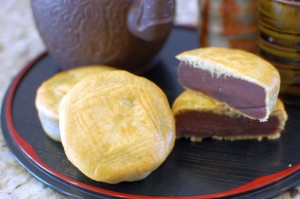
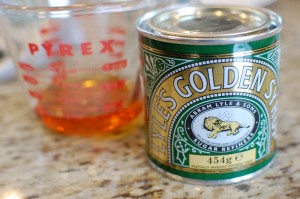
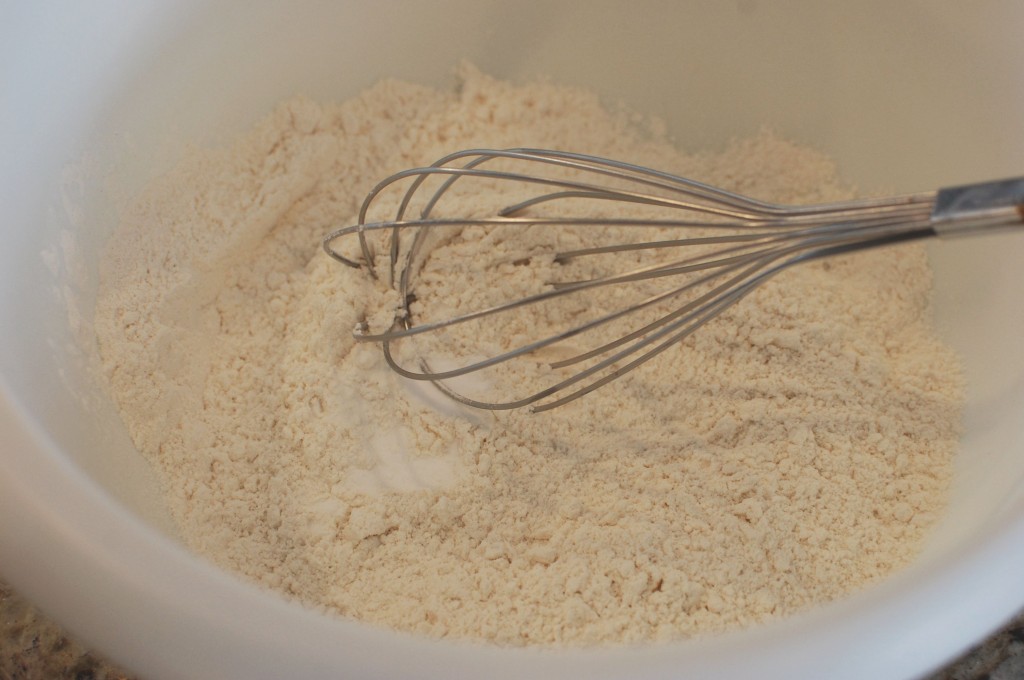
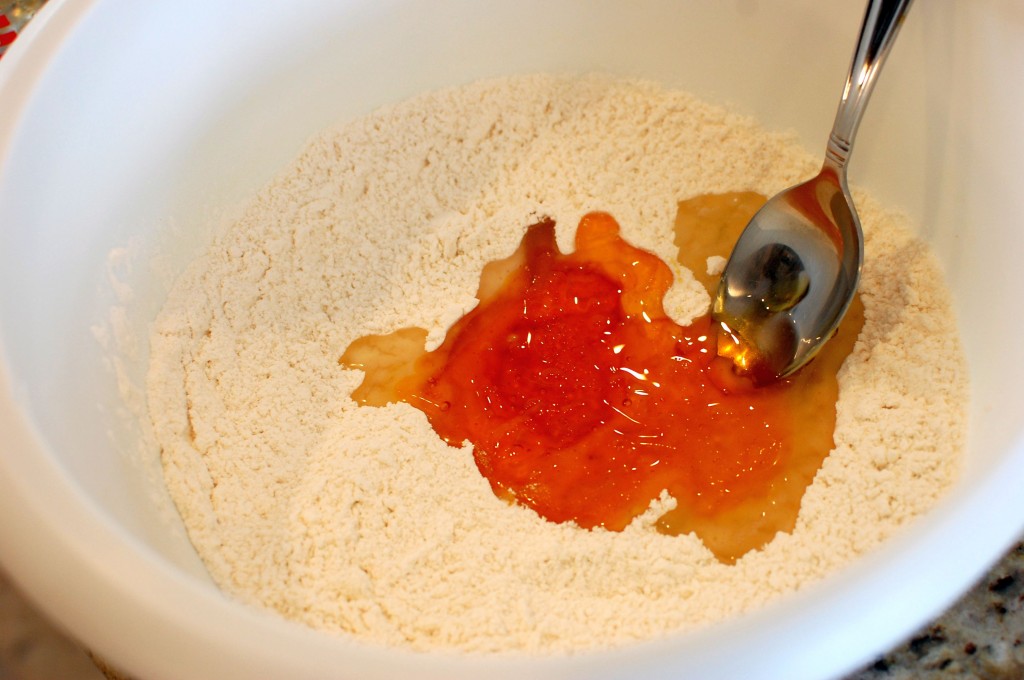
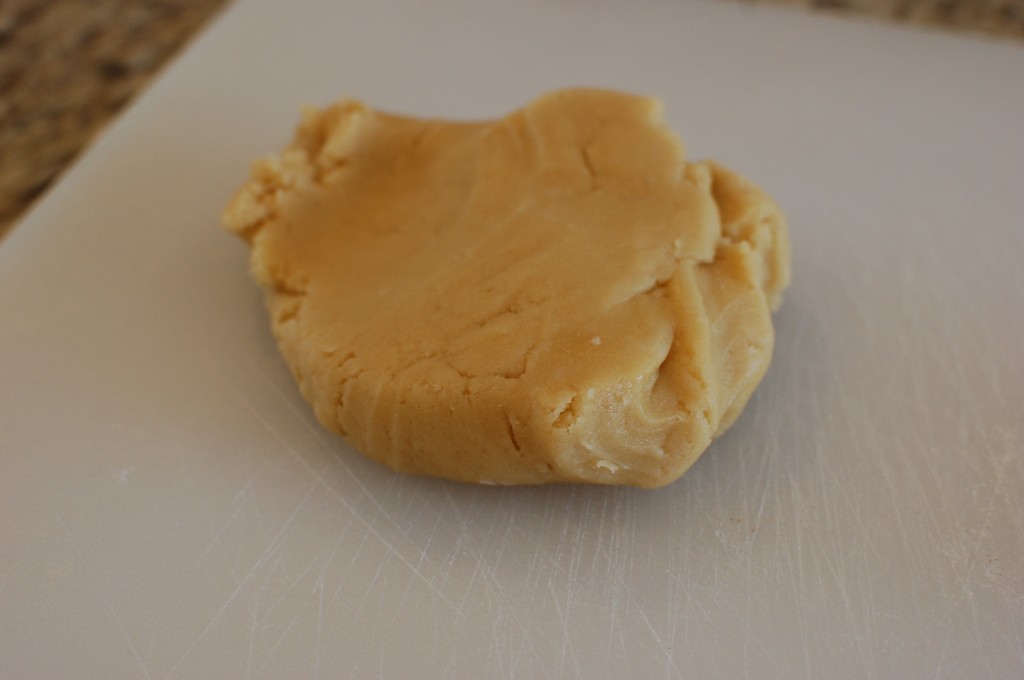
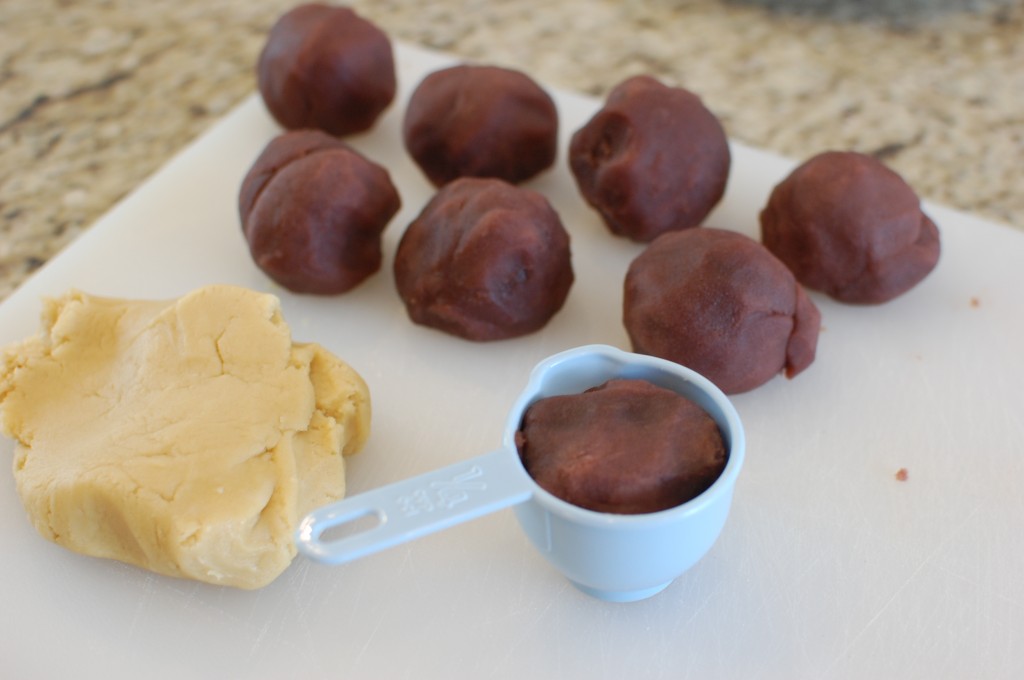
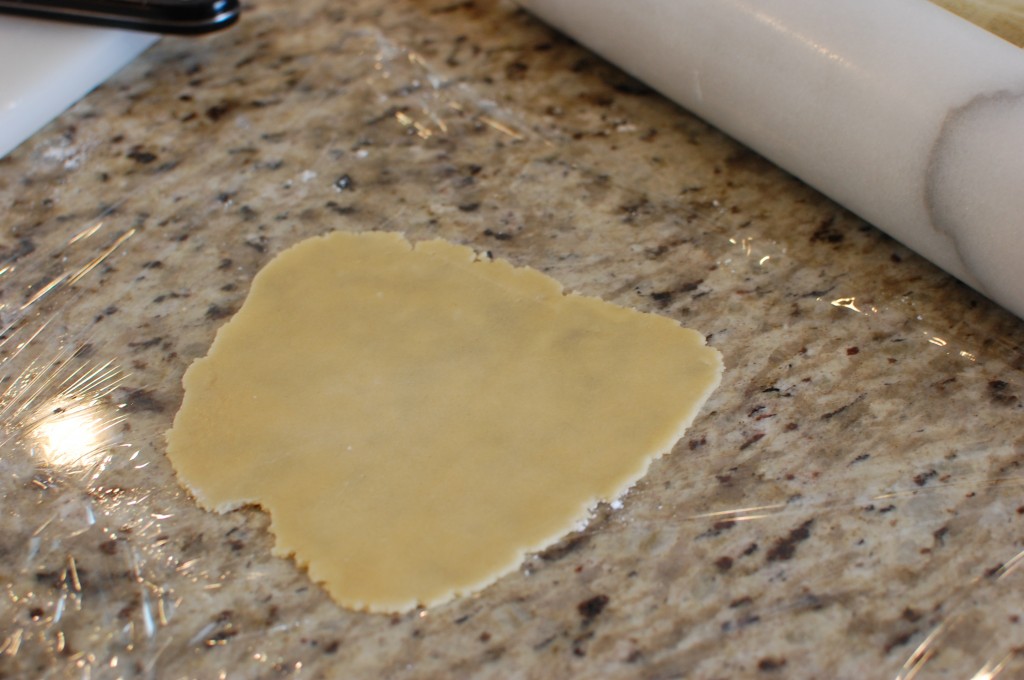
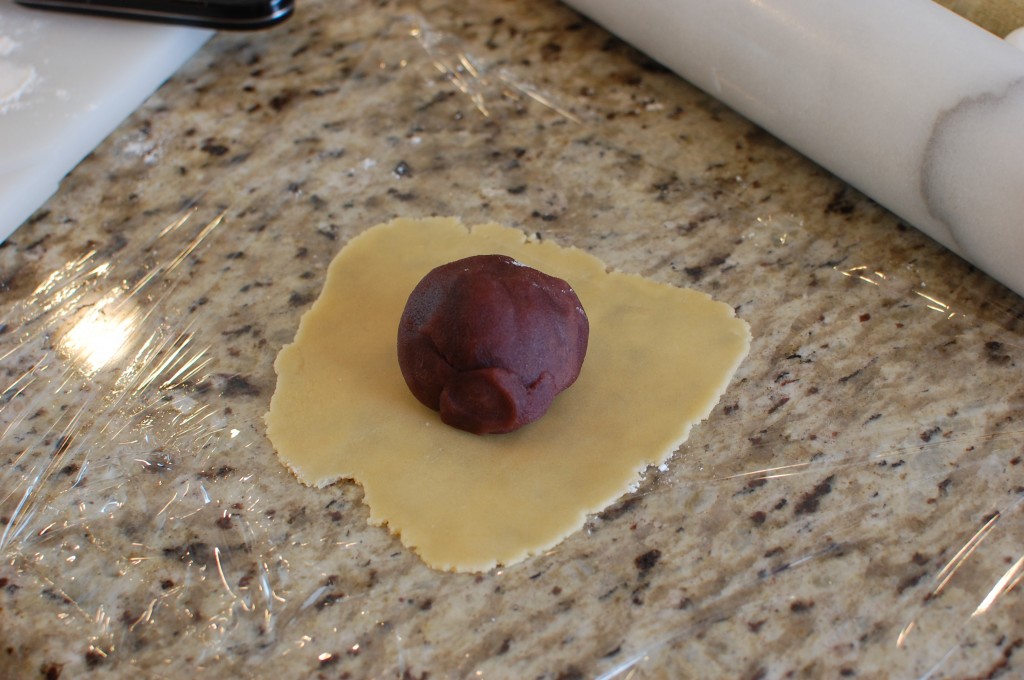
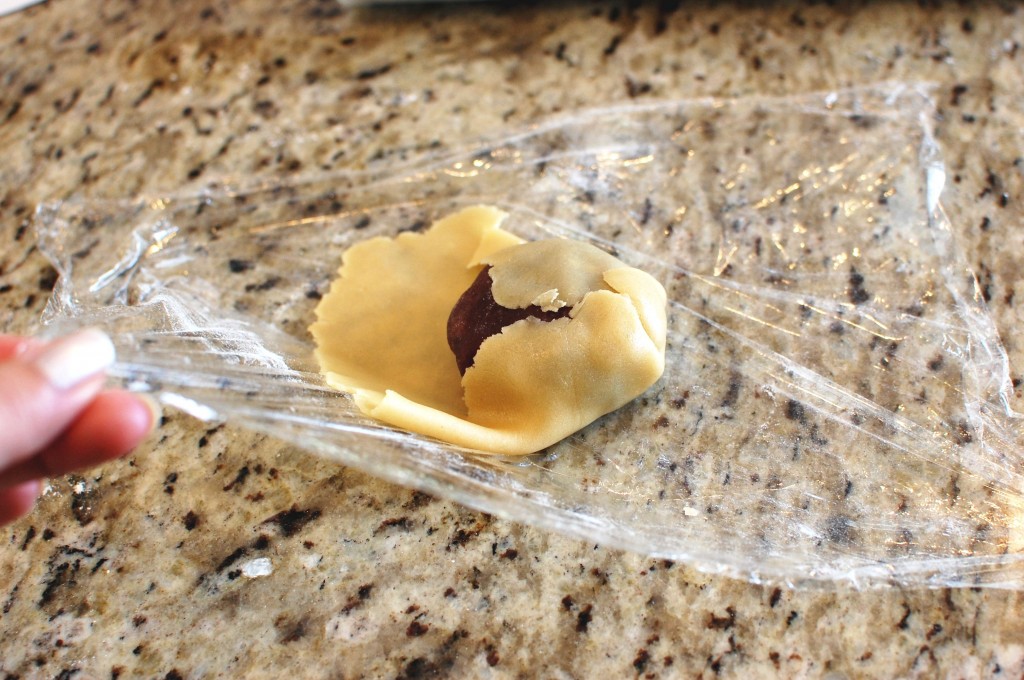
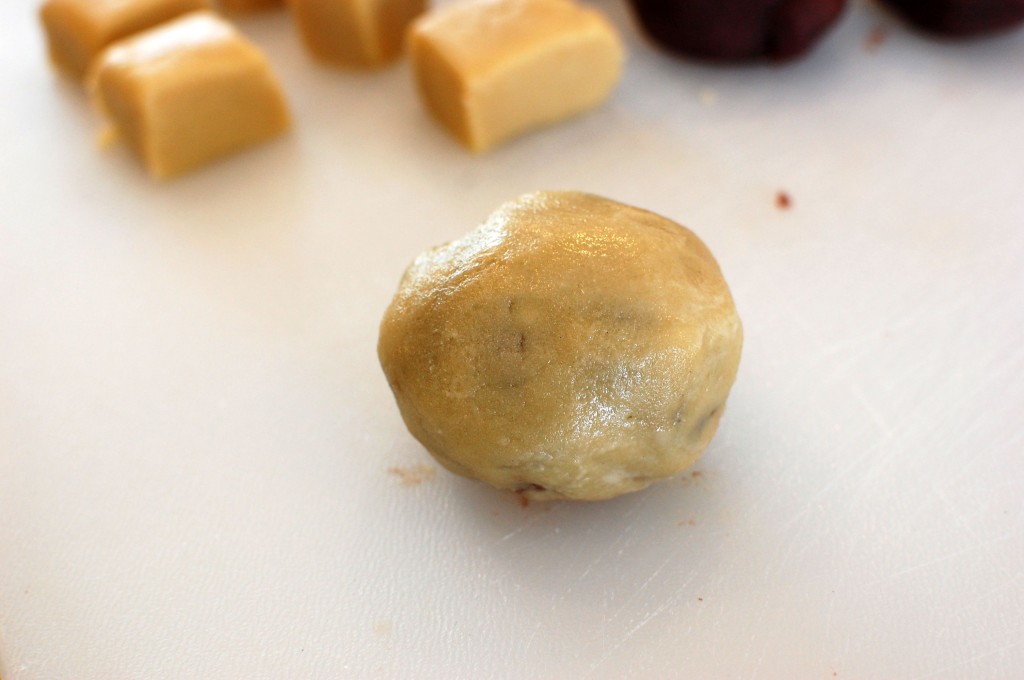
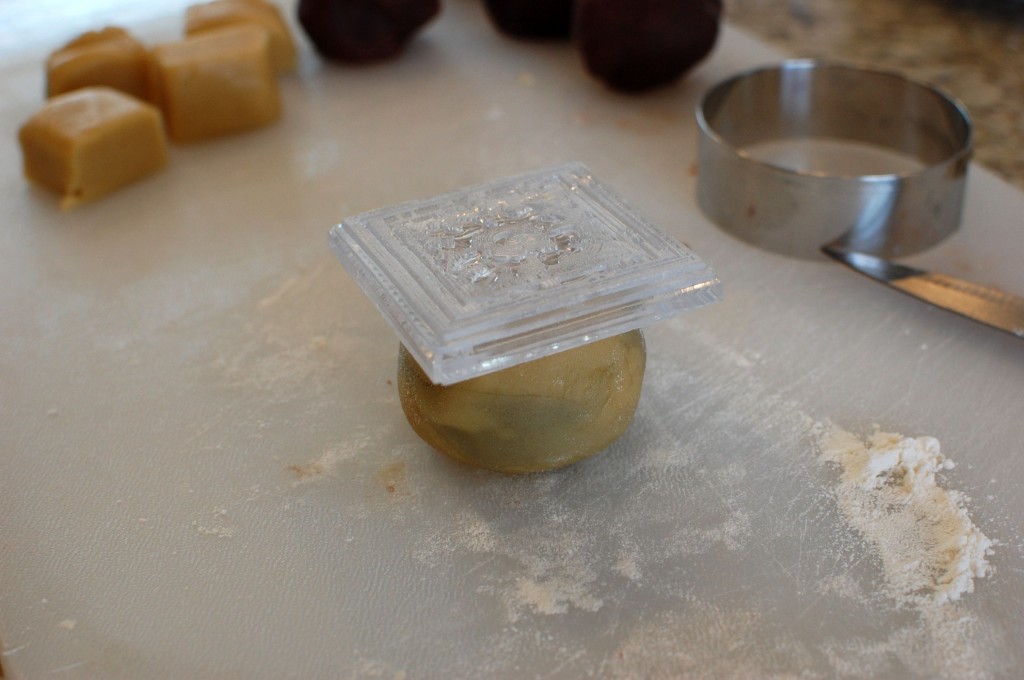
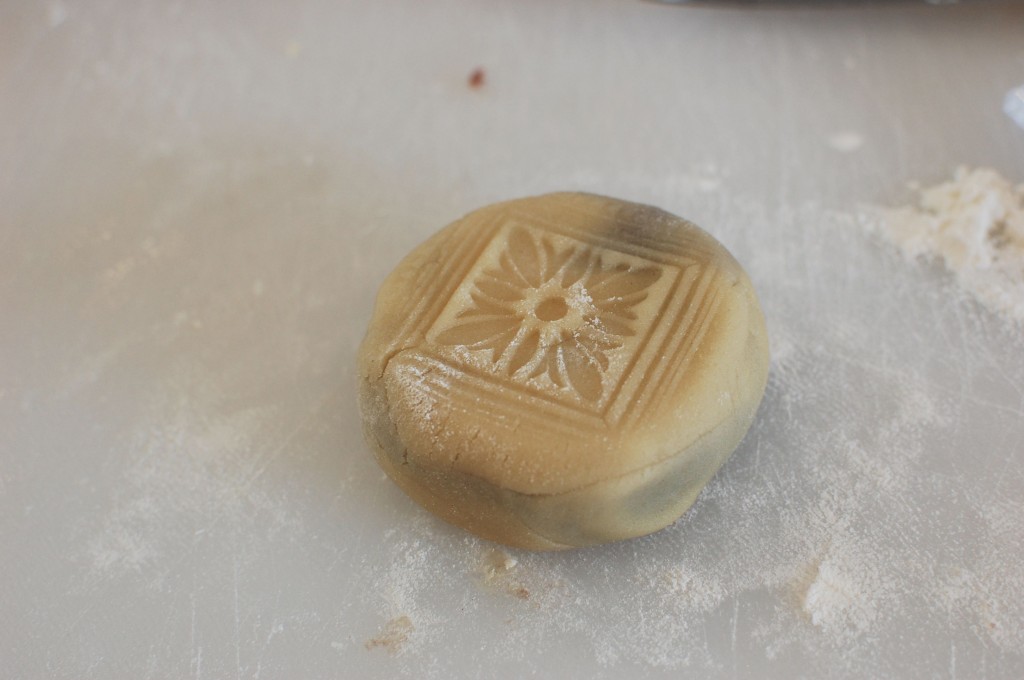
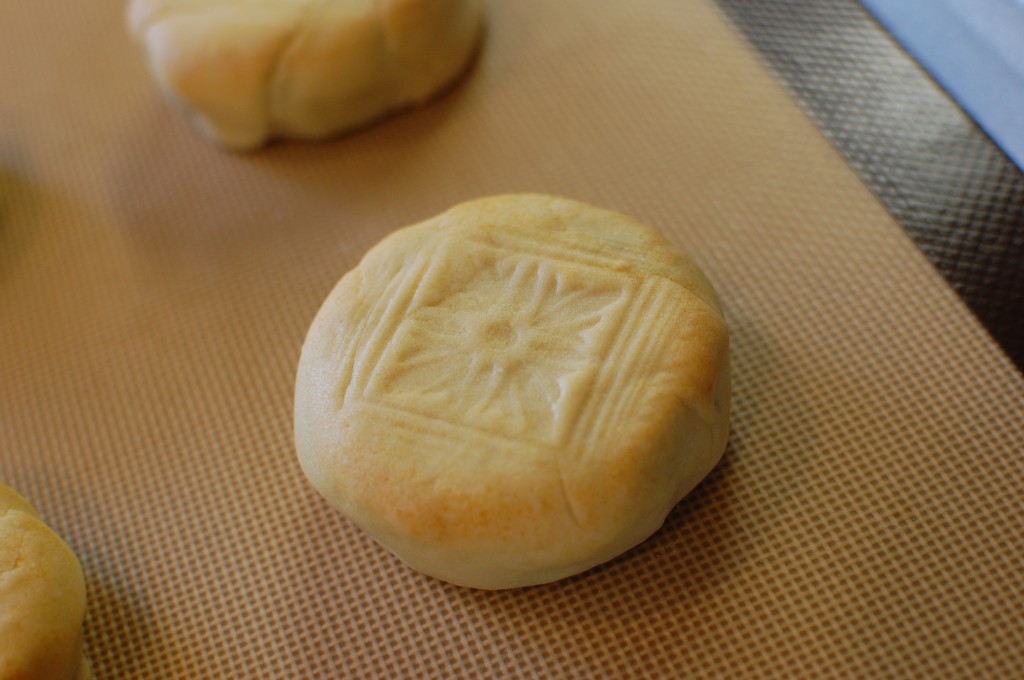
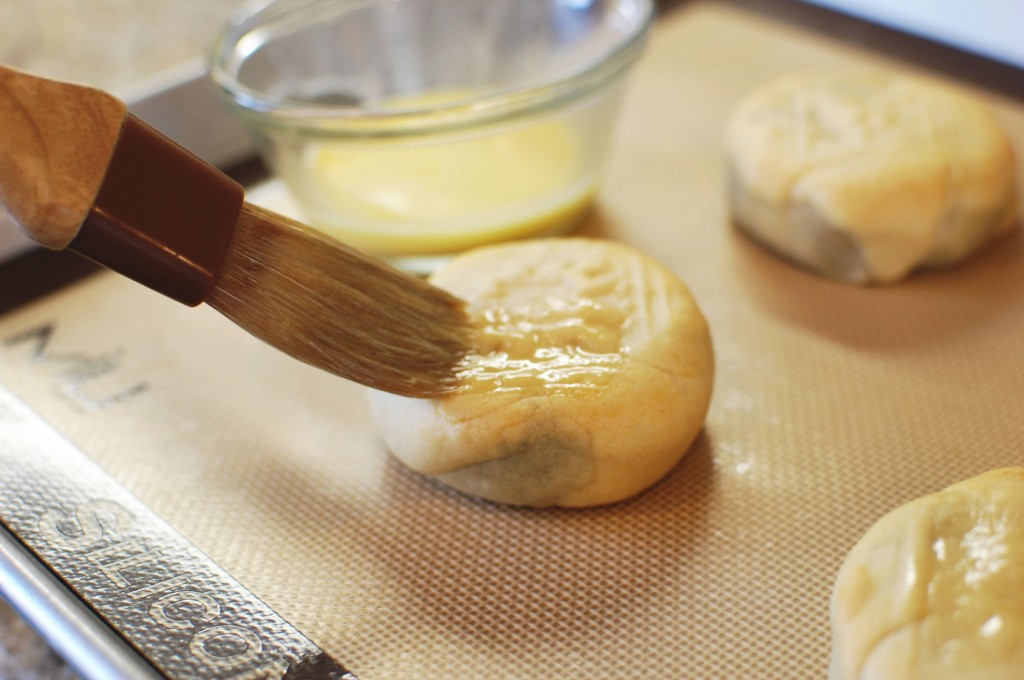
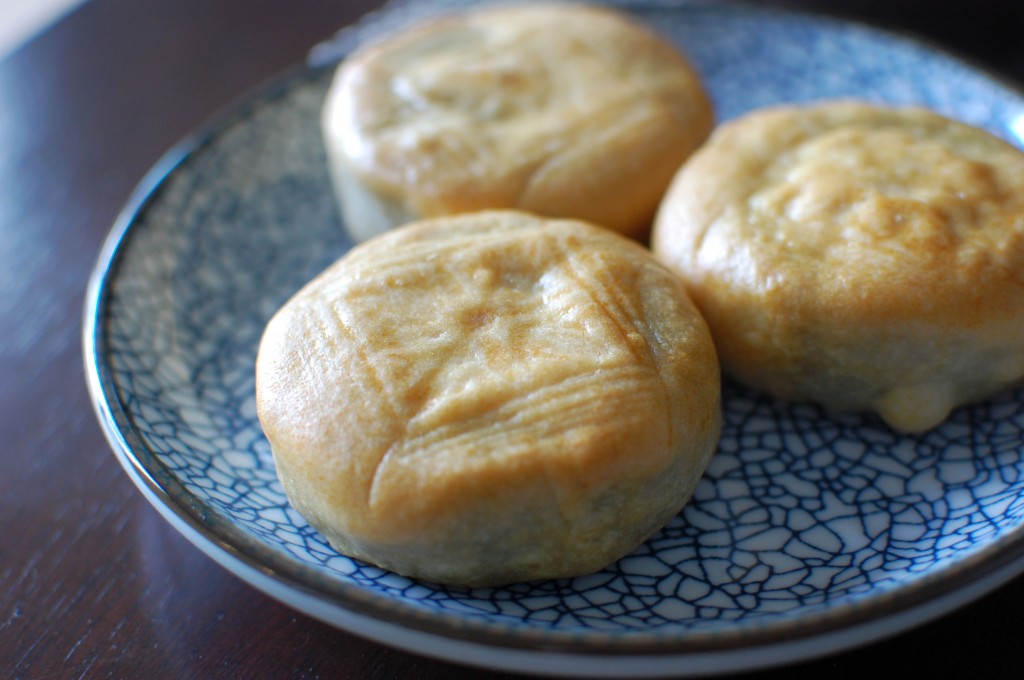


Okay I’ve always wanted to learn to make these. On a side note I went a little crazy with the donut recipe, I put marshmallows the batter. Some came out fine and I think I put a little too much in the other because the marshmallows came through the side and crystallized. Now to that Soft pretzel recipe, it just so happens that my chef decided to do a Sam Adams cherry wheat soft pretzel and I’ve got to say we liked your recipe.
So thank you for making my job easier.